New networked sound, media and control system for Movie Park Germany in Bottrop, Part 1
Dieter Michel
Movie Park Germany in Bottrop-Kirchhellen on the periphery of the Ruhr District is a theme park that was launched in 1996 as “Warner Bros. Movie World” based on the Australian attraction of the same name. After Warner sold all their theme parks at the end of the millennium, when Six Flags Inc. took over the park and then sold it to Palamon Capital Partners in 2004, the theme park continued to operate as “Movie Park Germany”. Due to the transition from the previous Warner Brothers licenses in the course of the second sale to licenses from Metro-Goldwyn-Mayer (MGM), 20th Century Fox and Nickelodeon, many of the park’s characters were replaced, but the film theme was retained.
In such a theme park, various attractions and rides as well as restaurants and stores are offered on a large area – in this case around 45 hectares – practically all of which also require background sound with music and speech, event sound systems, alarm sound systems and control functions.
The starting point for the project described below was the fact that the previous park-wide sound system (known as Site Sound) was getting on in age. Over the course of time, problems had increasingly arisen because the system contained components that had been discontinued due to their age, whose support had expired and for which spare parts/devices were no longer available, meaning that they could no longer be repaired if they failed. The systems in question were therefore due for renewal – and it was to be a major project in the form of a cross-site, networked media system. The planning team opted for the Q-SYS system from QSC as the platform for the new system, which would meet both current and future requirements for a park-wide media system for Movie Park Germany.
In the course of this decision-making process, the AV/IT department at Movie Park Germany, headed by Walter Weijten, also had contact with Torsten Haack, Director EMEA Marine & Theme Parks with the American manufacturer QSC. This is how the company became aware of the QSC Q-SYS system. With this system, it would not only be possible to create a networked sound system, but also to do much more – including show control, which will be the subject of a later article.
In order to realize the plan for a park-wide, networked media system, the QSC Q-SYS platform was chosen as the basis for the architecture of the system.
For the planning and implementation, Movie Park’s AV department brought the Wuppertal office of Bentin Projects on board under the leadership of Bernhard Blank. Bentin Projects had previously contributed their experience and expertise in the theme park sector with the construction of the MPG Studio Tour and demonstrated the efficiency of the Q-Sys system at Movie Park. Bernhard Blank was therefore also responsible for the system design, the integration of the overall system and the subsequent Q-SYS programming for this project.
Site Sound
The topic of site sound initially only concerned the outdoor sound system. Until then, the sound systems for the various rides and attractions had been designed in such a way that they were more or less self-contained systems that functioned more or less autonomously and required few connections to the outside – but also could not offer more than just that. A park-wide, integrated sound reinforcement concept was therefore previously unthinkable.
On the one hand, of course, this has to do with the time when the existing site sound system was designed. The park opened in 2005 under a new name and with new licenses/themes. The existing site sound system, however, had not been replaced as part of the name change and was therefore still based on the 1996 version. At that time, a cross-park site sound installation was perhaps not yet as important as it is today, and secondly, the technical possibilities for this did not yet exist in a form that would have allowed such a far-range network to be designed economically and conveniently.
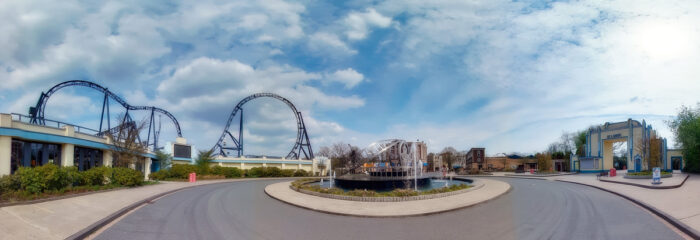
After all, Movie Park Germany has a total area of around 45 hectares (450,000m²), with the park extending over 1,000m in length and more than 400m in width. In view of these distances, it is understandable that park-wide networking was not considered from the very beginning when planning the existing facility.
Networked media systems
When coming up with ideas for a new concept for the site sound system, the first thing to consider was whether to leave the existing architecture of the outdoor sound system with more or less independent electro-acoustic systems for the respective attractions and “just” modernize the whole thing – or to build a networked media system that would be flexible enough to meet the requirements for the site sound, the sound system for the rides and attractions and possibly even be capable of more. Of course, such a decision requires not only the will to implement a certain concept, but also the technical resources to actually build such a system with tried and tested components available on the market – because it is not normally the desire of operators to eliminate the teething troubles of a new system in a large theme park during productive operation.

Freely programmable DSP systems for fixed installations have been available for around 30 years now – so there are already various systems to choose from for pure signal processing tasks. The very early systems were not yet designed for complex networking over longer distances, because at that time there was simply a lack of technical solutions for reliable digital audio networking over longer distances. In the meantime, of course, digital audio networking is no longer rocket science, especially as the transmission bandwidth of modern IT networks lends itself to multi-channel audio networking, even over long distances. Accordingly, there have been a whole series of solutions for audio networking via IT network infrastructures over the years, many of which have become firmly established on the market – Dante, AVR and AES67 are just a few of many keywords.

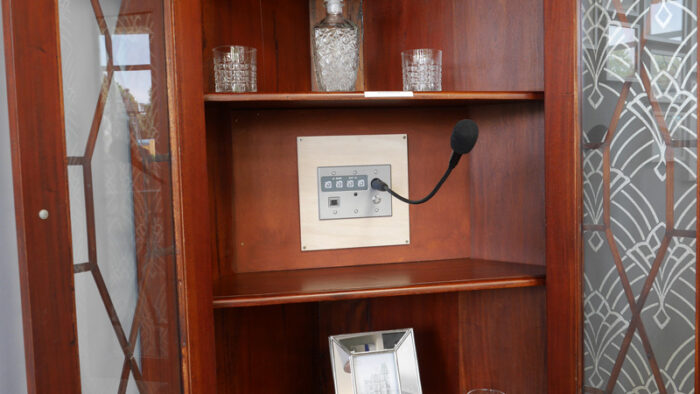
In addition to the fact that there are now various hardware and software solutions for individual challenges of site-wide networking and distributed signal processing, one should not lose sight of the fact that it is also necessary to manage such a large media network during productive operation – firstly in terms of content, and secondly in terms of the structure of the network and any changes and expansions.
For the technical department responsible for the reliable operation of such a system, as at Movie Park Germany, it therefore has to be as easy as possible to control and monitor operations in the various areas – and it should also be easy to provide and integrate new functionalities at various locations within the network if this should become necessary for future applications.
Last but not least, safety is a top priority for all event locations, including large theme parks such as Movie Park Germany. In connection with this, it is of course also important to be able to record or play back safety-related announcements in a controlled manner at various locations in the park – in the rides and attractions as well as in the stores and restaurants, but also outside on the paths.
Of course, with such an enormous installation, it is not possible to modernize all these different functional areas in a single roll-out, but when designing a new, site-wide system, it is of course important to at least consider all these points in advance, even if planning and implementation then take place later in several phases and over a certain period of time.
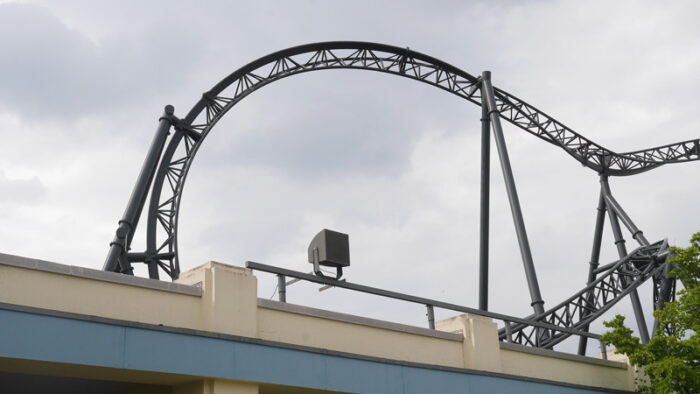
However, if you take all of this into account, there are a whole host of individual requirements for the functionality of such a system, so that the air becomes a little thinner when it comes to selecting a suitable hardware and software platform. Of course, there are plenty of DSP systems for the various signal processing tasks, networking concepts based on IT network components, options for later expansion of such systems and, finally, system components for safety-related tasks, such as alarm announcements and control of safety-related processes, for example for the evacuation of individual attractions.
The crux of the matter is not even so much the availability of different systems that can cover the individual functionalities – for the technical department, of course, the aim is also not to let such a system become more heterogeneous than necessary, because otherwise there is a risk that unexpected and possibly difficult-to-solve problems will occur at the interfaces between the individual subsystems. In such situations, there may also be support problems on the part of the manufacturer, because solving a problem may require detailed cross-manufacturer technical knowledge on both sides of the interface – a requirement that cannot always be met by the manufacturer’s support departments involved, because internal information about the other systems may not be readily accessible.

Even if independent – let’s say stand-alone solutions – are available for the individual task areas, which of course already make it possible to operate an amusement park today, the next step towards the most homogeneous, networked media system possible is not so easy to take. This is because there are not many systems that can offer all the desired functionalities from a single source.
On the other hand, it was a natural step to strive for such a system, as it has been clear for many years where networked media systems are heading:
Ideally, you have a network whose infrastructure details you don’t actually need to know as a user, and which is capable of transmitting audio, video and control data at the desired bandwidth without any bottlenecks occurring anywhere. Of course, this has to be planned accordingly when setting up and expanding, but for operation it should ideally work in such a way that users no longer have to worry about the structure of the network during productive operation, as long as there are sufficient access options and generally enough bandwidth available at the respective locations.
Furthermore, there are sources and sinks in every media system. In a sound system, these would be microphones, audio players of various kinds and, as sinks, typically loudspeakers or perhaps also audio recorders or mobile devices (which may receive an audio signal as a stream).
In the video sector, you also need sources for still and moving images as well as the corresponding output devices, typically projectors and displays.
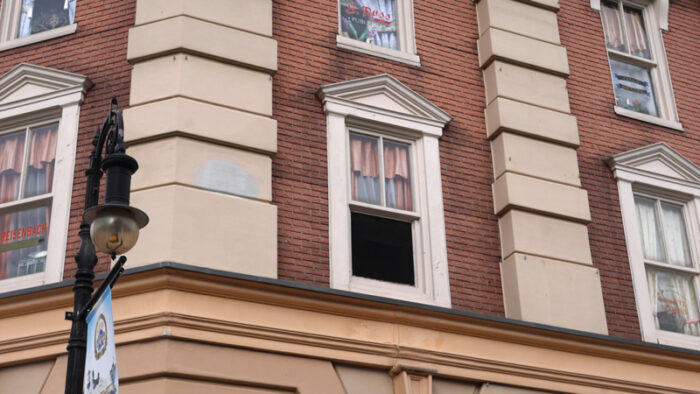

Control data, on the other hand, is typically less critical in terms of data transmission because the amount of data to be transmitted is usually much smaller than for audio or video. However, it is important to ensure that it is possible to communicate with the various sources and sinks. Typical control interfaces of connected devices are, for example, switching contacts and the previously widespread serial interface (RS-232). Nowadays, however, direct control via the network (wired and possibly wireless) is also very often possible, typically using UDP (User Datagram Protocol) or TCP (Transmission Control Protocol).
In the case of safety-relevant functions, it is typically the case that the system components involved in the respective function must not only be able to fulfill their respective tasks, but that appropriate monitoring must also ensure that these system components also function at all times. If not, a component failure or other error must be reported accordingly and measures taken to remedy the malfunctions – but a safe operating state must be guaranteed in any case.
This is already quite a large basket filled with wishes and requirements. Accordingly, it was somewhat more difficult for the planning team to select a suitable platform for Movie Park Germany’s new networked media system. As already mentioned, it was not necessarily a question of fulfilling all wishes for future functionalities immediately. Rather, it was about being able to implement the goals set in a timely manner and not creating dead ends for future additions and expansions. However, it must be kept in mind that a subsystem in the park is normally operated over the time period in which the investment is depreciated and at the latest up to the point when reliable operation can no longer be ensured because equipment is discontinued and can no longer be repaired or replaced. However, the basic infrastructure is typically not touched any more, at least not in the sense that fundamental changes are made. Rather, over the years, it will be more a matter of gradual modernization in order to adapt the performance of individual system components to the respective technical status.
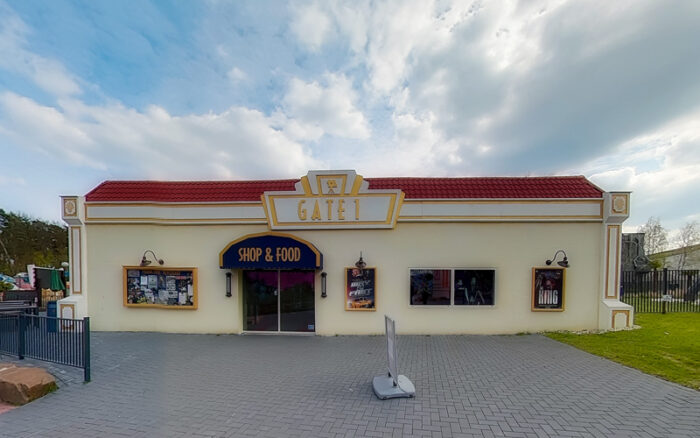
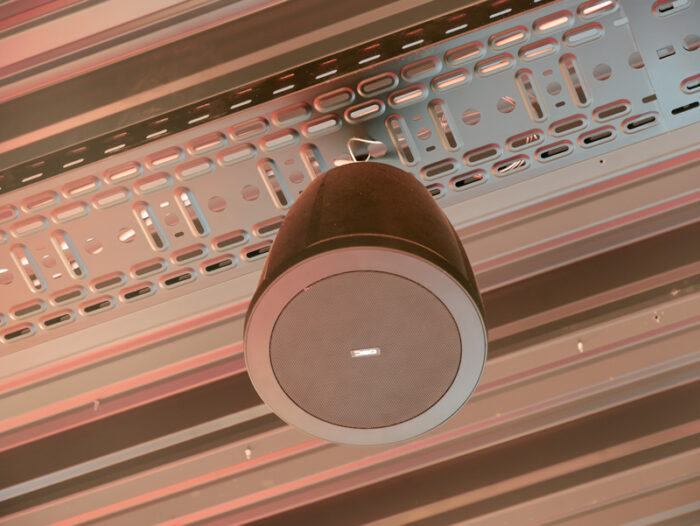
QSC Q-SYS
With Q-SYS, QSC offers a signal processing and control platform that has the potential to fulfill the aforementioned tasks that were required for the implementation of a new media system for Movie Park Germany.
Q-SYS is a system developed by QSC that integrates the functional components of a networked media system into a system platform that can be managed via the cloud.
In the case of a public address system, the integration ranges from the audio inputs, and even the system microphones for alarm purposes, to audio networking, system amplifiers and loudspeaker systems. As the system components are part of an integrated system in this way, Q-SYS can not only be configured very flexibly, but can also provide continuous function monitoring of the system components if required.
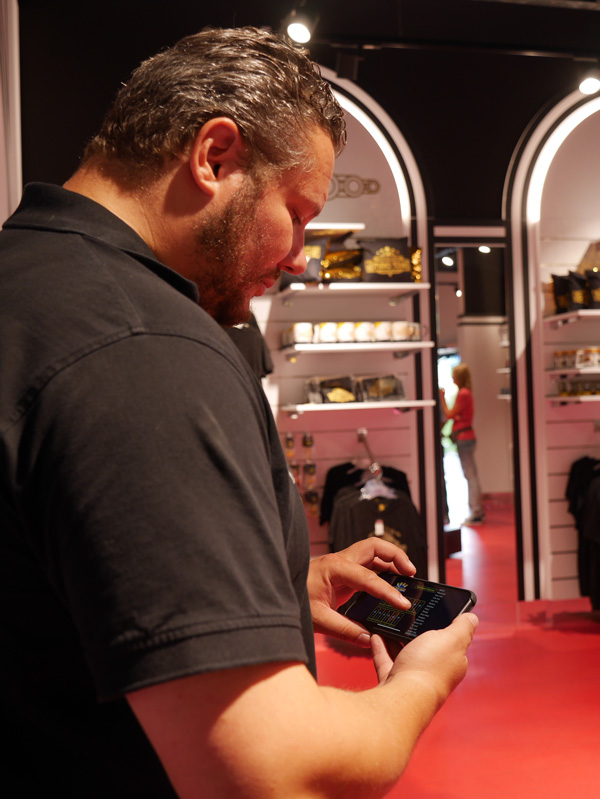
Signal processing modules and I/O interface modules are among the core components of a Q-SYS system. So-called cores provide, among other things, the computing power for signal processing, which can be scaled according to the requirements of the application by selecting the appropriate core(s).
The Q-SYS I/O components provide the interfaces to the outside world, such as analog inputs and outputs, interfaces to digital audio and network formats, interfaces to the system output stages and interfaces to audio network formats such as Dante.
The Q-SYS QIO network audio extensions and cores (Core 8 Flex, Core110f v2), operated in peripheral mode, allow the physical inputs and outputs of a spatially distributed system to be placed where they are needed.
The Q-SYS QIO audio I/O extensions are used to integrate non-network-compatible audio devices into the Q-SYS system. They can also be placed where local I/O is required. There are three models with mic/line connections to choose from.
By the way, Dante-enabled audio components are no longer integrated via interface cards, but directly via the network on a license basis without Dante hardware.
The Q-SYS cores perform all signal processing and control tasks in the network. Depending on the different requirements that an application places on signal processing performance and the number of available audio channels, there are currently six different cores that differ in terms of signal processing capacity and the number of manageable audio channels. The “entry-level model” is the Core Nano, which can manage up to 64×64 audio channels. The most powerful model is the Core 5200 for a maximum of 512×512 audio channels. The maximum number of Dante channels depends on the respective license. The smaller cores have a license for 8×8 channels pre-installed and can be expanded up to 32×32, the larger cores can manage up to 128×128 Dante channels, the Core 5200 512×512 channels.

In contrast to signal processing concepts based on DSPs, the Q-SYS cores provide their computing power with “normal” Intel multi-core processors that run under Q-SYS OS, a specially developed real-time Linux. In this context, “real-time” means that the Q-SYS OS guarantees maximum response times to external cues or triggers, which may be important for safety-critical applications.
The decision in favor of digital audio signal processing based on Intel processors is, of course, due to the fact that these offer such high computing power nowadays that the performance advantage of special DSPs is noticeably relativized. For the manufacturer and ultimately also for the user, this has the advantage of being independent of proprietary DSP developments – and even worse: discontinuations – and being able to rely on standard hardware.
Ultimately, this approach also corresponds to the trend of using “normal” high-performance IT hardware for a specialized, networked audio and media system, which can also offer a price advantage as a result.

Power Amplifiers / System Loudspeakers
In order to be able to use all the advantages of Q-SYS system monitoring and convenient operation, network-compatible power amplifiers (Q-SYS CX-Q series) and Q-SYS system loudspeakers are also used in many locations in the Movie Park. The CX-Q series includes models with four or eight channels and offers flexible output power distribution with a maximum total output of up to 8000W. The operating modes low impedance, 70V or 100V can be selected for all channels, so that 70/100V speaker lines can also be connected directly to the power amplifier channels without separate transformers.

User Interface / System Design
A Q-SYS system is configured using the Q-SYS Designer software, an object-oriented graphical programming interface similar to that used for freely programmable DSPs. In principle, the block diagram of the desired system is created from signal processing components using drag-and-drop on a graphical user interface. The Q-SYS Core then “simply” converts this block diagram into a signal processing system with the corresponding functionality. The Q-SYS designs are compiled and transferred to the hardware in just a few seconds. This means that any necessary changes or updates can be carried out on site in the shortest possible time. In contrast to conventional DSPs, however, Q-SYS combines audio, video and, via the LUA scripting language, control in one system.
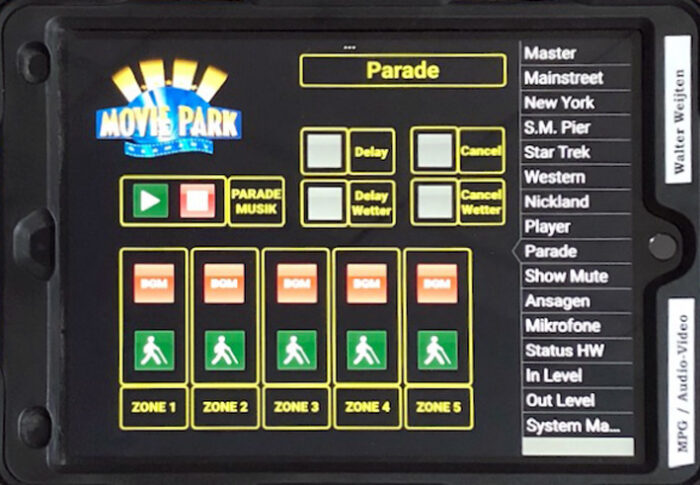

User interfaces are designed in a similar way. Operation is not only possible by means of a connected PC, but also web-based, for example with tablets connected via WLAN, whose user interface is also programmed via the Q-SYS Design GUI. Such an extremely mobile user interface is of course invaluable, especially in the case of wide-area networking such as at Movie Park Germany. If something needs to be adjusted or reconfigured, you can simply go on site with the tablet and make all the necessary settings without delay.

Networking
The digital networking of the Q-SYS components is based on a Gigabit Ethernet infrastructure, which offers the aforementioned advantage of a cost-effective hardware architecture. Q-SYS uses its own layer 3 protocol, Q-LAN, for the transport of audio data with a very low latency of just 3.167ms from each input to each output. Q-LAN does not necessarily have to be used. For example, it is also possible to connect network-compatible audio components, such as existing power amplifiers, via Dante or AES67. Dante is based on normal Gigabit Ethernet hardware. With the current cores, a separate Dante card is no longer necessary, it is sufficient to install a license that covers the required number of Dante audio channels.

Redundancy
In all applications where it is important to ensure the safety of people, the issue of reliability and redundancy is normally also on the list of requirements.
The Q-SYS system supports redundancy on several levels:
Network redundancy is achieved by duplicating network connections on core and I/O components. If a redundant network is set up with separate switches and separate – and ideally spatially separated – network cabling, the duplicate cabling allows a seamless switchover to the second network path if one network path fails.

The new concept for the media system at Movie Park
The Q-SYS system therefore has the potential to put the new site sound system on a fundamentally more powerful and far more flexible basis, which quickly became clear to the planning team in the AV/IT department at Movie Park. It would make it possible to not only manage the site sound uniformly throughout the entire park, but also to integrate not only the various rides, but also the lighting technology in the park, video players and other third-party devices from third-party providers.
The aim of the new concept was to ultimately be able to control all the AV technology in the entire park with a conveniently portable tablet, i.e. wirelessly. Fortunately, this idea was also supported by the management, who also had the goal of equipping the park in a more modern and flexible way, especially in order to be able to implement future plans for attractions and rides quickly and smoothly.
At the time of our first on-site visit, the Q-SYS system was already being used for the site sound and a number of rides, street shows and shops/restaurants. For special events, the required sound can be provided quickly, either by configuring existing speakers accordingly or by quickly integrating mobile systems into the Q-SYS network. Configuration and operation are carried out wirelessly using the tablets already mentioned.
Among other topics, the second part of this report will deal with the control functions of the Q-SYS system.
Gefällt dir der Artikel?
Dann teile ihn mit deinen Freunden.
Benutze dafür unsere Links:



















Kommentar verfassen